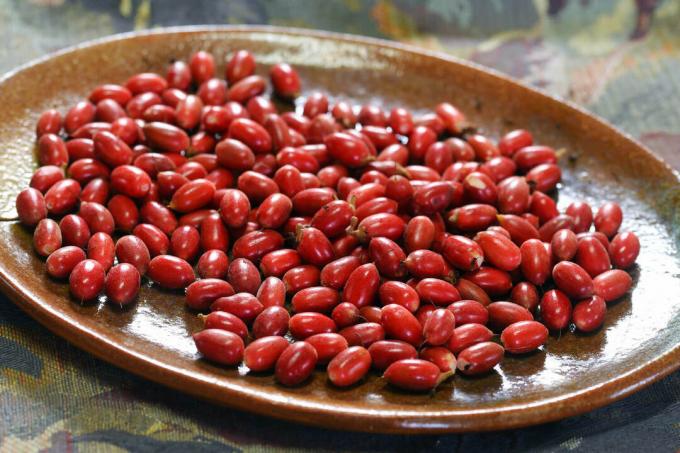The magical sounding name of this still very unknown berry has to do with its special effect on the taste buds. Are you curious?

The miracle berry is called miracle fruit or miracle berry in English. Its scientific name is Synsepalum dulcificum. The tree that bears the small, red fruits is native to West Africa. It was there that it and its fruit were first documented in 1725. European explorers saw the locals pick the berries and eat them before their meals. But what is so special about this miracle fruit?

The somewhat elongated berry itself has a mildly sweet taste. But of course that's not special. However, their unique selling point in the fruit family is that they have a special effect on our taste buds. It contains a glycoprotein called miraculin, which binds tightly to the taste buds of the tongues. If you eat the pulp of the miracle berry and then eat food with an actually sour or bitter taste, you will no longer perceive the originally expected taste. Because the miraculin of the miracle berry releases a sweet taste in the mouth when it comes into contact with acidic food. This effect lasts anywhere from 30 minutes to two hours.
The fruit is now slowly arriving in the western world. In some metropolises, such as New York, there are even so-called food tasting events (i.e. events in which you try different dishes), where the miracle berry is used comes. In Japan, the land of curious and exclusive fruits, it has of course already arrived. In Europe, however, their approval as a food is currently pending. Where it is already available, you pay around 2 US dollars for a single berry.

But the fruit is not only of interest in terms of taste: tests are currently being carried out on various diseases to determine whether the exotic berry can also work wonders there. It may prove helpful, for example, in diabetes patients. With a single calorie despite the sweet taste, it is of course also interesting for the diet industry.
It remains to be seen how the popularity of the miracle berry will develop in the near future. We'll definitely stay tuned for you.
